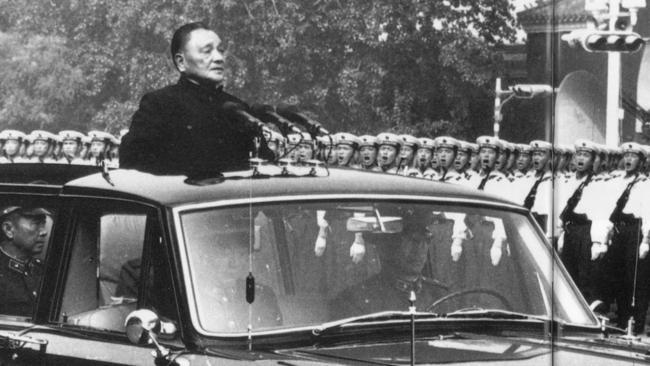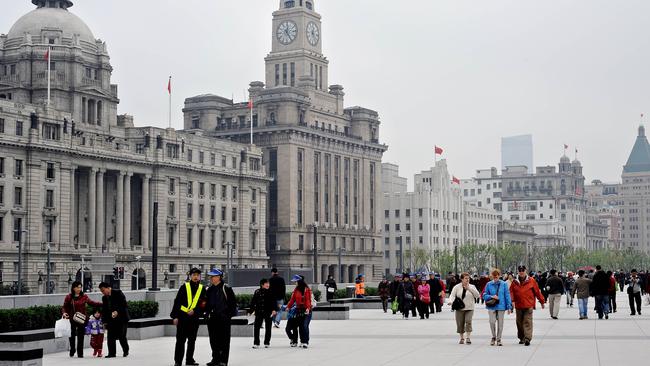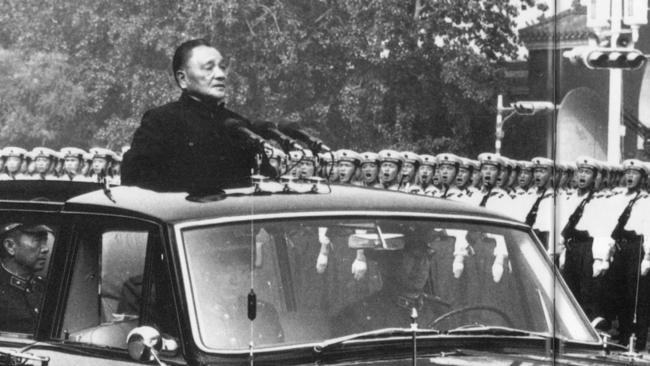Long and bumpy ride for the Wall Street of the East
When China’s financial markets sneeze the world worries it will catch cold.

Today in History
Don't miss out on the headlines from Today in History. Followed categories will be added to My News.
When China sneezes, the world worries it will catch a cold. No, we’re not talking about Asian flu epidemics. This time it is the plunging Chinese sharemarket that is sending waves of panic around the world.
It seems strange that a country ruled by a communist party can have such a profound effect on capitalist global markets.
But over the quarter of a century since the Shanghai stock exchange reopened to the world, China has regained the position it once held as a prominent financial hub, making up for lost time under the strict communism of Mao Tse Tung (Zedong).
Before the communists came to power in 1949 China was in the thick of global trading, and Shanghai’s financial district on the Bund, on the bank of the Huangpu River, was known as the Wall Street of the East.
RISE TO WORLD PLAYER
China’s first rise to being a player in the world marketplace began in the 1800s. For centuries the country had resisted opening to foreign trade, but the Opium Wars against Britain (1839-42) and against Britain and France (1856-60), fought primarily as China tried to rid itself of the opium trade brought to China by European traders, resulted in treaties that forced China to open its doors to foreigners.
The Chinese were forced to concede territory for an international settlement which centred on the Bund (an ancient Persian or Indian word for riverbank). It was here that hotels, banks and other institutions geared to international visitors and traders were built and the first securities markets came into existence in the 1860s.
In 1866 the North China Herald published the first list of shares and in 1869 the British Stock Company opened. By the 1870s there were several trading houses, but no public stock exchange.

MINING BOOM
That development would not happen until the 1890s when a boom in mining shares necessitated a more sophisticated operation. A group of Western businessmen banded together in 1891 to form the Shanghai Sharebrokers Association, which operated out of the Western Chamber of Commerce building.
China’s defeat in the Sino-Japanese War of 1895 resulted in an expansion of foreign trade in Asia so that by the turn of the century there was a need to restructure the association.
In 1904 the association applied to be registered as a company under the name Shanghai Stock Exchange.
Rubber trading dominated business on the exchange as it continued to grow. In 1920 it moved to Astor House and in 1934 to the Securities Exchange building. It was East Asia’s largest and most modern securities market.
WAR CLOUDS
China’s stock markets rode out the worst of the Depression but the Japanese invasion of China in 1937 had a detrimental impact on trading.
Japan’s occupation of the international settlement in Shanghai in 1941 shut down the Shanghai exchange and it was not until the defeat of the Japanese that it could return to normal trading in 1945.
The exchange’s return to life was short-lived as runaway inflation in 1948 closed it until March 1949.
In May that year the communists claimed victory in the civil war under the leadership of Mao, shutting down the Shanghai stock exchange and other exchanges. Some were briefly reopened but by 1952 China had stopped share trading and had withdrawn from world financial markets.
After the death of Mao, his successor Deng Xiaoping began to allow limited exchanges across the country as part of an economic development policy.
In 1990 he re-established the Shanghai stock exchange, but believed he could keep control of it. He was of the opinion that socialism could adopt “certain aspects of capitalism” including stock markets.
“We should not be worried about making mistakes. We can close it and reopen it later,” Deng said in 1995.

OPEN AND SHUT
Shanghai’s Bund was actually formed in 1404 when thousands of workers were set to the task of dredging the Huangpu, creating the crescent-shaped river bank that would later become Shanghai’s financial centre. In 1949 after closing all stock exchanges the communist government experimented with reopening the Tianjin exchange. In 1950 it reopened the Beijing exchange. Both were closed again in 1952. During Japanese occupation from 1937-45 many stock brokers traded shares on a black market.
Originally published as Long and bumpy ride for the Wall Street of the East



